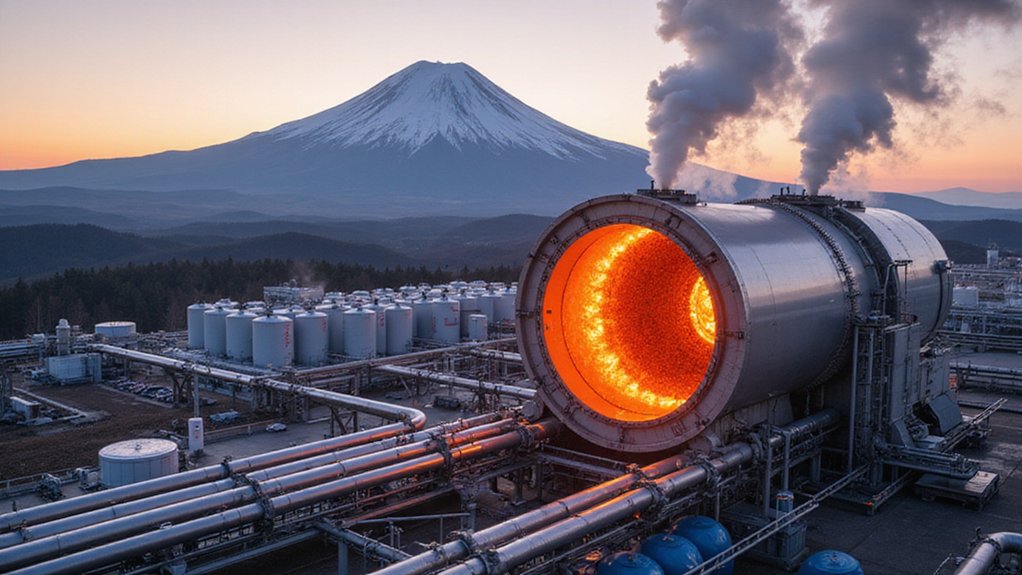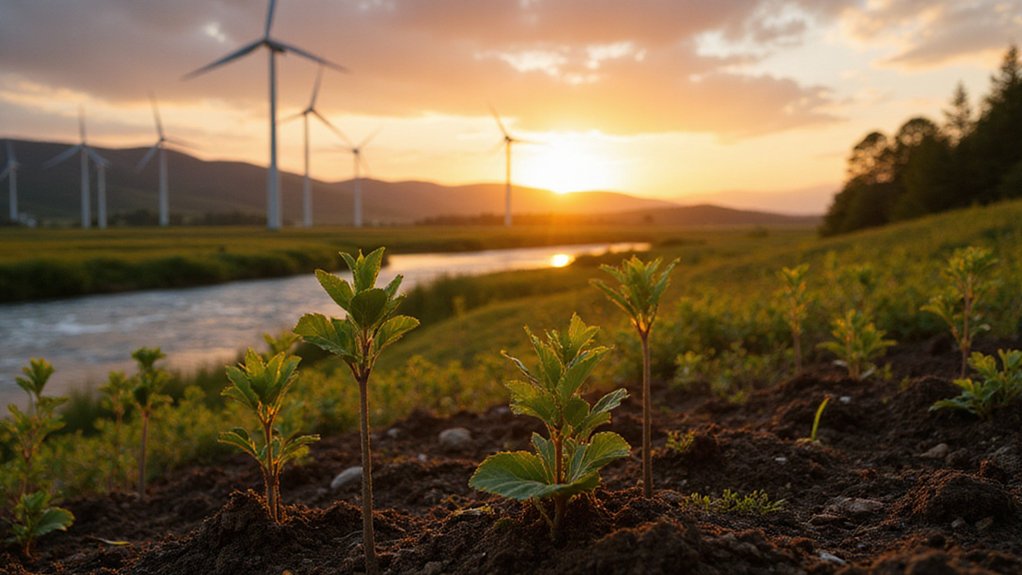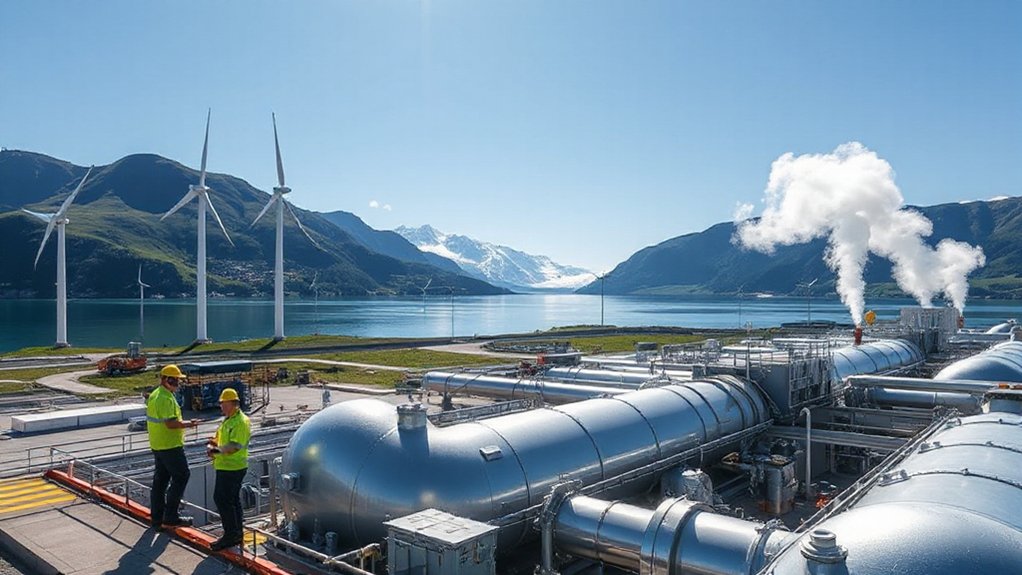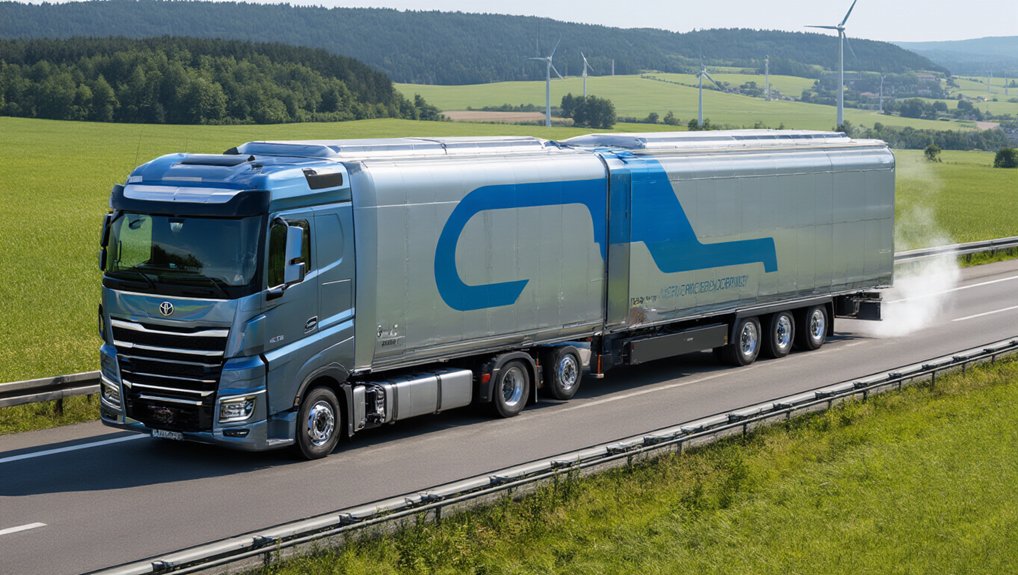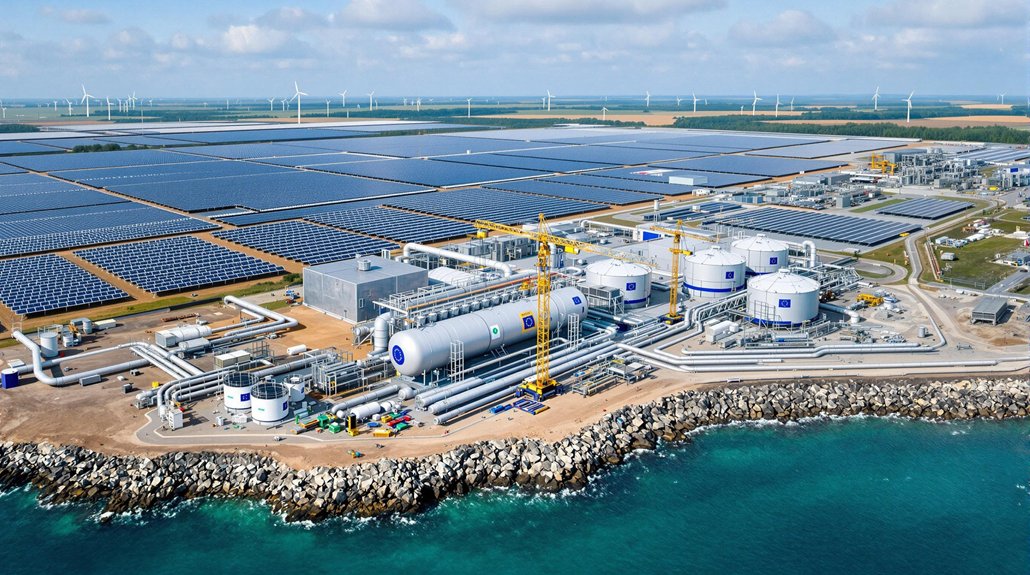Japan’s pursuing a game-changer in energy markets. Their atomic scientists are using high-temperature nuclear reactors reaching 950°C to split water molecules without carbon emissions. Smart move. The JAEA’s pilot already produced hydrogen for 150 continuous hours, with plans to scale up dramatically by 2030. Companies like Toshiba and Kawasaki Heavy Industries are all in. Other countries might just get left behind in the hydrogen transformation.
While many countries struggle to develop clean hydrogen production methods, Japan is charging ahead with a bold strategy that could transform global energy markets. The Japan Atomic Energy Agency (JAEA) isn’t messing around with small steps—they’re going straight for the jugular with high-temperature gas-cooled reactors (HTGRs) capable of reaching a scorching 950°C. That’s not just hot; it’s game-changing hot.
Japan isn’t playing around with hydrogen—they’re unleashing 950°C nuclear reactors while the world is still taking notes.
These reactors aren’t your grandpa’s nuclear plants. They use “thermochemical water splitting,” which is basically nuclear science showing off. Instead of electricity, they’re using straight-up heat to crack water into hydrogen and oxygen. No carbon emissions. No nonsense. Just clean hydrogen production that could make fossil fuel executives break out in cold sweats.
In 2009, JAEA kept their reactor running at 950°C for 50 days. Fifty. Days. Other countries are still drawing diagrams while Japan’s already cracked the code. Their pilot operations produced hydrogen at 30 liters per hour for 150 hours, but that’s just the appetizer. The main course is coming with systems like the GTHTR300, aiming for 120 tons of hydrogen daily. That’s not a typo.
The timeline is aggressive but realistic. Field trials by 2028, demonstration-scale production by 2030, and full-scale operations in the late 2030s. Japan’s not waiting for permission to lead the hydrogen transformation. The field tests scheduled for 2028 will be crucial in validating this innovative approach to hydrogen production. The project located at Oarai Nuclear Engineering Institute in Ibaraki prefecture is poised to become a critical technology demonstration site.
What’s the big deal? This tech could change steel production, chemical manufacturing, and energy storage. Zero carbon emissions. Direct heat utilization. Maximum efficiency. Japan is positioning itself as the hydrogen supplier to the world, and they’re bringing nuclear’s big guns to a fight that most countries haven’t even shown up for yet. This approach offers significantly higher production efficiency rates than current PEM electrolyzer technologies used in facilities like Sauk Valley.
Companies like Toshiba, Fuji Electric, and Kawasaki Heavy Industries are already on board. Because when Japan says they’re going to transform the hydrogen market, smart money listens. The rest just fall behind.
References
- https://www.h2-view.com/story/japan-pilot-targets-clean-hydrogen-from-nuclear-heat/2124974.article/
- https://www.hydrogeninsight.com/production/japan-plans-hydrogen-production-with-next-generation-nuclear-reactor-using-heat-and-only-minimal-electricity/2-1-1621135
- https://world-nuclear.org/Information-Library/Non-power-nuclear-applications/Industry/Nuclear-Process-Heat-for-Industry.aspx
- https://www.hydrogeninsight.com/production/japanese-researchers-seek-permission-to-modify-nuclear-reactor-to-harvest-heat-for-hydrogen-production/2-1-1798963
- https://www.nucnet.org/news/jaea-and-mhi-join-global-race-to-generate-green-hydrogen-from-nuclear-4-2-2022
